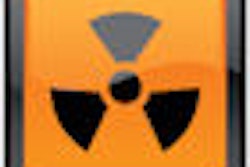Tuesday, December 1 | 11:10 a.m.-11:20 a.m. | SSG18-05 | Room S403AB
Phase-correlated imaging procedures represent the state of the art for cardiac CT angiography; however, the technique requires low pitch factors that increase the applied dose.For dual-energy CT (DECT) imaging, "full angular sampling can be assured for pitch factors of three or even slightly higher due to the two tube-detector systems," Dirk Ertel from the University of Erlangen in Germany told AuntMinnie.com. "Using increased pitch values [with] corresponding acquisition modes offer the advantage of decreasing both patient dose and the total data acquisition time."
The study evaluated high-pitch scanning on a dual-source CT system (Somatom Definition Flash, Siemens Healthcare, Erlangen, Germany), which provides increased z-coverage and a shorter gantry rotation time, with complete coverage in a single cardiac cycle.
Cardiac imaging with a pitch factor of 3.2 was compared to conventional low-pitch data acquisition for retrospective phase-correlated image reconstruction.
"We investigated ... whether disadvantages with respect to image quality may result," Ertel said. "In particular, spatial and temporal resolution have been assessed."
Both data acquisition schemes for cardiac CT scanning provided excellent image quality. Spatial and temporal resolution for high-pitch acquisition was unimpaired and corresponding image quality was equivalent to conventional spiral phase-correlated acquisition, Ertel said. Even at the largest pitch factor, z-resolution was only slightly decreased.
"The high-pitch acquisition scheme provided shorter scan times by a factor of up to 18 -- and significantly reduced dose values," he said. "In another consequence, the high-pitch acquisition is also less sensitive to unintended, spontaneous respiratory motion."




















